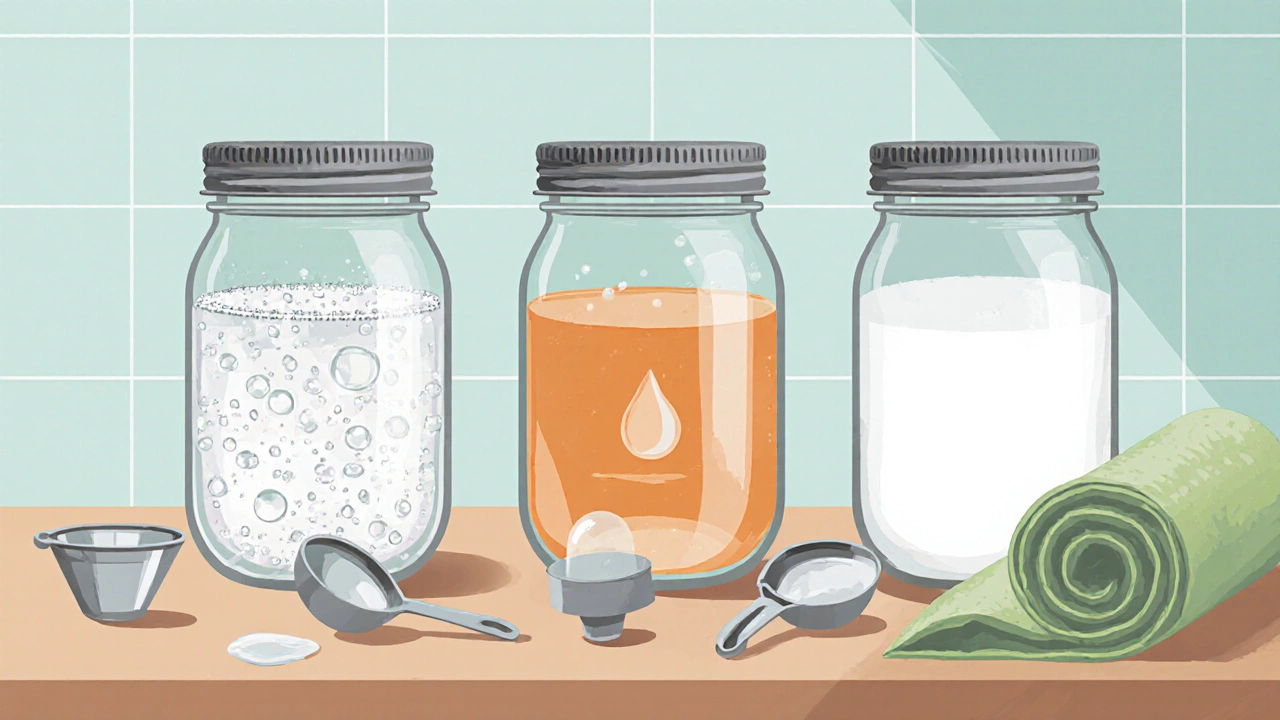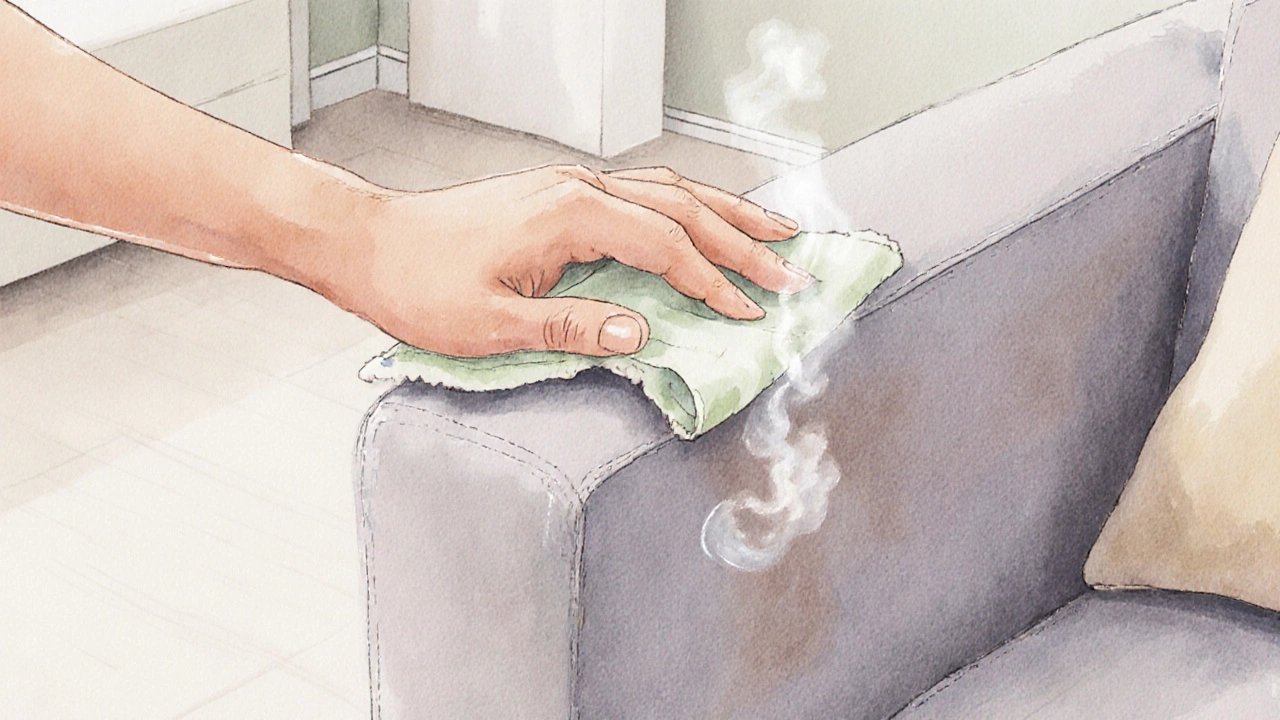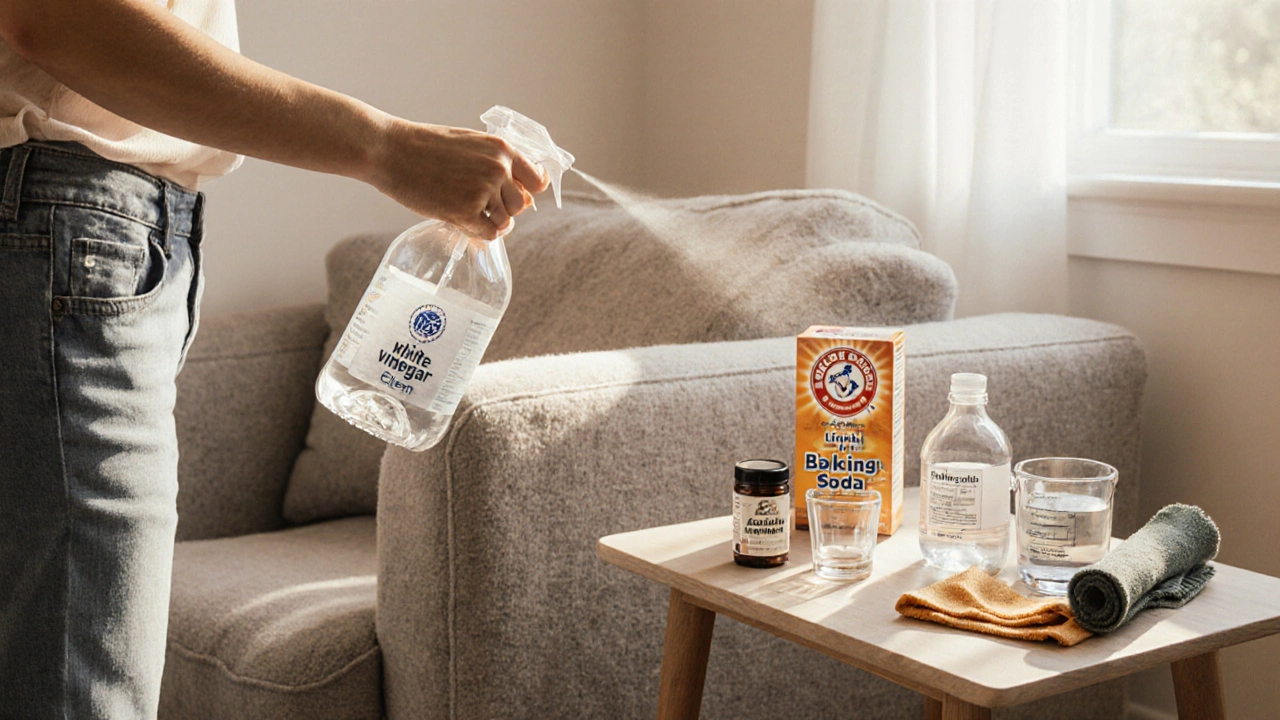Upholstery Stain Finder
What type of stain do you have?
Recommended Solution
Key Ingredients
How to Apply
When you want to freshen up a sofa or favorite armchair without splurging on professional services, a DIY upholstery cleaner is a homemade solution that lifts dirt, oils, and light stains while keeping fabrics safe can be a game‑changer.
What makes a good DIY upholstery cleaner?
A good DIY cleaner does three things: it breaks down grime, it rinses out without soaking the fabric, and it leaves no sticky residue that can attract more dirt. The formula should be pH‑balanced for common upholstery fibers like cotton, linen, microfiber, and polyester. If the mix is too acidic, it can weaken threads; too alkaline and it may cause discoloration.
Because we’re mixing at home, we also want ingredients that are cheap, safe around kids and pets, and easy to find in a typical UK kitchen. That’s why the recipes below rely on pantry staples and a few specialised but inexpensive items.
Common household ingredients that work
- White vinegar - a mild acid that cuts grease and neutralises alkaline residues.
- Baking soda - a gentle abrasive and deodoriser that lifts particles.
- Castile soap - a vegetable‑based soap that creates a low‑foam cleaning base.
- Hydrogen peroxide (3%) - a mild oxidiser that can fade organic stains without bleaching colourfast fabrics.
- Enzyme cleaner - breaks down protein‑based stains like food or pet accidents.
- Distilled water - prevents mineral spots that tap water can leave on upholstery.
- Microfiber cloth - the best tool for applying and blotting the solution.
Three proven recipes
Pick the recipe that matches the type of stain you’re dealing with. All three recipes cost under £0.50 per use and are safe for most upholstery fabrics.
| Recipe | Key Ingredients | Best For | Cost per Use |
|---|---|---|---|
| Vinegar‑Baking Soda Blend | 1 cup distilled water, 1 tbsp white vinegar, 1 tsp baking soda | General grime, mild food spills | ~£0.10 |
| Castile‑Soap Suds | 2 cups distilled water, 2 tsp liquid Castile soap, 1 tsp hydrogen peroxide | Greasy stains, oil‑based marks | ~£0.20 |
| Enzyme Cleaner Mix | 1 cup distilled water, 2 tbsp enzyme cleaner, 1 tsp white vinegar | Protein stains - vomit, blood, pet urine | ~£0.30 |

How to test and apply your DIY cleaner
- Spot‑test: Dampen a hidden corner with a tiny amount of the solution. Wait 5‑10 minutes. If the colour stays unchanged, you’re good to go.
- Blot, don’t rub: Use a clean Microfiber cloth to blot the stain. Rubbing can push dirt deeper into the weave.
- Apply in layers: Spray or dab the solution lightly, let it sit 2‑3 minutes, then blot with a dry part of the cloth. Repeat until the spot lifts.
- Rinse gently: Lightly mist distilled water over the cleaned area to remove any residue, then blot dry.
- Air‑dry: Let the upholstery dry completely before using the furniture again - usually an hour in a well‑ventilated room.
Tips for stubborn stains
- Grease or lipstick: Start with the Castile‑Soap Suds mix. The mild surfactant lifts oily pigments without stripping colour.
- Wine or coffee: After the vinegar‑baking soda blend, sprinkle a little extra baking soda on the damp area and let it dry. It absorbs remaining pigments.
- Pet urine: Use the Enzyme Cleaner Mix, then follow with a second rinse of distilled water. Enzymes break down the uric acid, preventing odour rebound.
- Set‑in dirt on microfiber: Lightly steam the fabric (no direct contact) after cleaning to refresh the weave and release trapped particles.

Safety and care considerations
Even though the ingredients are household‑safe, a few precautions keep you and your furniture happy:
- Wear gloves if you have sensitive skin - vinegar can sting.
- Avoid over‑wetting. Too much water can foster mould under the upholstery padding.
- Never mix bleach with any of the recipes. The chemistry can release toxic gases.
- Store leftover solutions in a clearly labelled bottle and use within a month - the effectiveness drops after that.
Frequently Asked Questions
Can I use these cleaners on leather sofas?
No. Leather needs a pH‑neutral leather conditioner. The acids in vinegar or peroxide can dry out the hide and cause cracking.
How often should I deep‑clean my upholstery?
A light spot‑clean every few weeks keeps grime at bay. For a full deep clean, aim for every 6‑12 months depending on traffic and pet presence.
Is hydrogen peroxide safe for coloured fabrics?
At the 3 % concentration used in the Castile‑Soap Suds mix, it’s generally safe for colour‑fast fabrics. Always spot‑test first.
Can I store the cleaners in the fridge?
You can, but it’s not necessary. Keep them in a cool, dark cabinet; temperature swings can affect enzyme activity.
What if the stain reappears after drying?
The residue might have set deeper. Repeat the cleaning cycle, this time using a longer dwell time (5‑7 minutes) before blotting.
